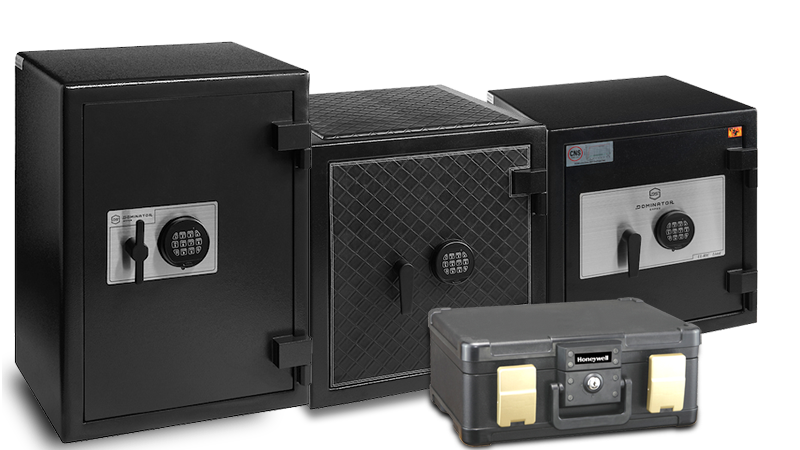Getting The Home Office Safes To Work
Table of ContentsUnknown Facts About Chubb Security SafesPerth Safe Company - QuestionsExcitement About Safes Perth

The is a structure for assisting make choices about making effective usage of information which is private or sensitive. It is primarily used to explain or create research study access to statistical data held by federal government firms, and by information archives such as the UK Data Service. 2 of the 5 Safes refer to analytical disclosure control, therefore the 5 Safes is normally utilized to contrast analytical and non-statistical controls when comparing information management options.
The combination of the controls causes 'safe usage'. These are most frequently revealed as questions, for instance: Safe tasks Is this use of the data appropriate? Safe individuals Can the users be depended use it in a suitable way? Safe settings Does the gain access to center limit unauthorised usage? Safe data Exists a disclosure risk in the data itself? Safe outputs Are the analytical outcomes non-disclosive? These measurements are scales, not limits.
For instance, a public usage file offered for open download can not manage who uses it, where or for what purpose, and so all the control (protection) need to be in the data itself. On the other hand, a file which is just accessed through a safe environment with certified users can include very delicate info: the non-statistical controls permit the data to be 'risky'.
There is no 'order' to the Five Safes, in that one is always more crucial than the others. Nevertheless, Ritchie argued that the 'supervisory' controls (tasks, people, setting) need to be addressed prior to the 'statistical' controls (information, output). deposit boxes. The 5 Safes idea is connected with other subjects which developed from the same program at ONS, although these are not always executed.

Drug Safes Fundamentals Explained
This discussion follows the concept of 'data as a residual', in addition to data protection laws of the time which often characterised data simply as confidential or not confidential. A comparable look at here concept had actually already been developed individually in 2001 by Chuck Humphrey of the Canadian RDC network, the 'continuum of access'.
The Five Safes was designed in the winter of 2002/2003 by Felix Ritchie at the UK Office for National Data (ONS) to explain its secure remote-access Virtual Microdata Laboratory (VML). It was described at this time as the 'VML Security Model'. This was adopted by the NORC data enclave, and more commonly in the United States, as the 'portfolio design' (although this is now likewise utilized read to describe a slightly different legal/statistical/educational breakdown). deposit boxes.
The original framework only had 4 safes (projects, people, settings and outputs): the structure was used to explain extremely detailed information gain access to through a protected environment, therefore the 'data' measurement was irrelevant. From 2007 onwards, 'safe data' was consisted of as the framework was utilized to an explain a larger variety of ONS activities.
Some discussions, such as the OECD, use the term 'secure' instead 'safe'. Nevertheless, using both these terms can cause presentational problems: less control in a particular dimension could be seen to imply 'hazardous users' or 'insecure settings', for example, which sidetracks from the main message. Hence, the Australian government uses the term "5 information sharing concepts".
There is no referral to the Five Safes or any associated literature. The Australian variation was required to consist of references to the Five Safes, and provided it safest drugstore makeup as an option without comment. The structure has had 3 uses: pedagogical, descriptive, and style. The latter is a relatively current advancement. The very first substantial usage of the structure, besides internal administrative usage, was to structure researcher training courses at the UK Workplace for National Data from 2003.

Getting The Deposit Boxes To Work
Eurostat in 2011). An early usage was to help determine locations where ONS' still had 'irreducible risks' in its provision of protected remote gain access to. The structure is mostly utilized for private social science information. To date it appears to have actually made little impact on medical research planning, although it is now included in the modified guidelines on carrying out HIPAA policies in the United States, and by Cancer Research UK and the Health Foundation in the UK.
In general the Five Safes has been utilized to explain options post-factum, and to explain/justify choices made, but an increasing variety of organisations have actually utilized the structure to create information gain access to options. For instance, the Hellenic Statistical Agency established an information strategy built around the 5 Safes in 2016; the UK Health Foundation utilized the 5 Safes to design its information management and training programs.
The significant design usage is in Australia: both the Australian Bureau of Statistics and the Australian Department of Social Service utilized the Five Safes as an ex ante design tool. In 2017 the Australian Productivity Commission advised adopting a variation of the structure to support cross-government information sharing and re-use.